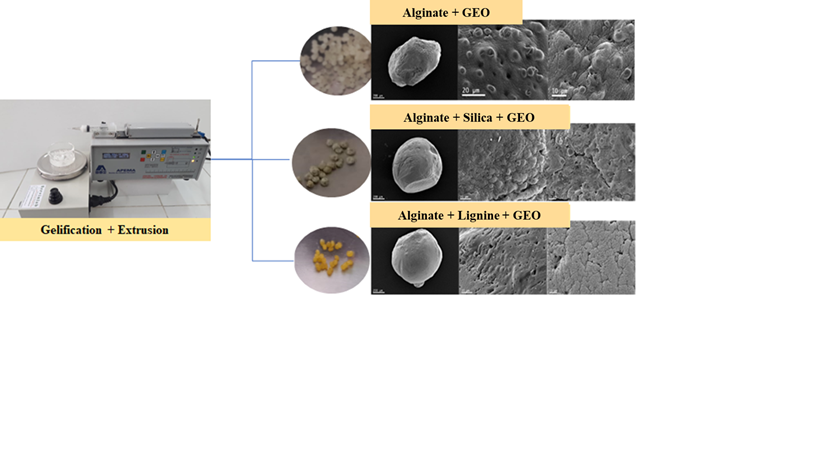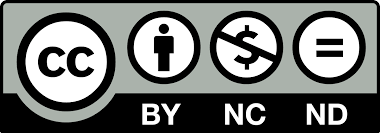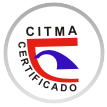MICROENCAPSULACIÓN DE ACEITE ESENCIAL DE POMELO EN MATRICES DE ALGINATO-LIGNINA Y ALGINATO-SÍLICE Y MODELADO DE SU LIBERACIÓN CONTROLADA
Palavras-chave:
encapsulación; alginato; lignina; sílica; aceites esencialesResumo
Translator
Referências
TABAN, A.; SAHARKHIZ, M. J.;
HOOSHMANDI, M. “Insecticidal and repellent
activity of three Satureja species against adult red
flour beetles, Tribolium castaneum (Coleoptera:
Tenebrionidae)” En línea. Acta Ecologica Sinica.
, 37(3), 201-206.
http://dx.doi.org/10.1016/j.chnaes.2017.01.001
RIOS MERA, J. D. et al. “Encapsulation
optimization and pH- and temperature-stability of the
complex coacervation between soy protein isolate and
inulin entrapping fish oil”. LWT. 2019, 116, 108555.
https://doi.org/10.1016/j.lwt.2019.108555
CHE, N.; DEMPERE, L. A.; TONG, Z. “Synthesis
of pH-Responsive Lignin-Based Nanocapsules for
Controlled Release of Hydrophobic Molecules”. ACS
Sustainable Chemistry & Engineering. 2016, 4(10),
-5211.
https://doi.org/10.1021/acssuschemeng.6b01209
LEAL MAZZA, K. et al. “Microencapsulation of
marjoram essential oil as a food additive using sodium alginate and whey protein isolate”. International
Journal of Biological Macromolecules. 2023, 123478.
https://doi.org/10.1016/j.ijbiomac.2023.123478
BENAVIDES, S.; CORTÉS, P.; PARADA, J.;
FRANCO, W. “Development of alginate
microspheres containing thyme essential oil using
ionic gelation”. Food chemistry. 2016, 204, 77-83.
http://dx.doi.org/10.1016/j.foodchem.2016.02.104
ARRIOLA, N. D. et al. “Encapsulation of stevia
rebaudiana Bertoni aqueous crude extracts by ionic
gelation - Effects of alginate blends and gelling
solutions on the polyphenolic profile”. Food
Chemistry. 2019, 275, 123-134.
https://doi.org/10.1016/j.foodchem.2018.09.086
DA SILVA C., A. G. et al. “Anthocyanins from
jussara (Euterpe edulis Martius) extract carried by
calcium alginate beads pre-prepared using ionic
gelation”. Powder Technology. 2019, 345, 283-291.
https://doi.org/10.1016/j.powtec.2019.01.016
POPESCU, L. et al. “The Effect of Aromatic Plant
Extracts Encapsulated in Alginate on the Bioactivity,
Textural Characteristics and Shelf Life of Yogurt”.
Antioxidants. 2023, 12(4), 893.
https://doi.org/10.3390/antiox12040893
ATENCIO, S.; MAESTRO, A.; SANTAMARIA,
E.; GUTIÉRREZ, J. M.; GONZÁLEZ, C.
“Encapsulation of ginger oil in alginate-based shell
materials”. Food Bioscience. 2020, 37, 100714.
https://doi.org/10.1016/j.fbio.2020.100714
BELSCAK CVITANOVIC, A. et al. “Emulsion
templated microencapsulation of dandelion
(Taraxacum officinale L.) polyphenols and β-carotene
by ionotropic gelation of alginate and pectin”. Food
hydrocolloids. 2016, 57, 139.
http://dx.doi.org/10.1016/j.foodhyd.2016.01.020
SAIFULLAH, M.; SHISHIR, M. R. I.;
FERDOWSI, R.; RAHMAN, M. R. T.; VAN
VUONG, Q. “Micro and nanoencapsulation, retention
and controlled release of flavor and aroma
compounds: A critical review”. Trends in Food
Science & Technology. 2019, 86, 230-251.
https://doi.org/10.1016/j.tifs.2019.02.030
CHAN, E. S. “Preparation of Ca-alginate beads
containing high oil content: Influence of process
variables on encapsulation efficiency and bead
properties”. Carbohydrate Polymers. 2011, 84(4),
-1275.
https://doi.org/10.1016/j.carbpol.2011.01.015
LI, M.; JIANG, X.; WANG, D.; XU, Z.; YANG,
M. “In situ reduction of silver nanoparticles in the
lignin-based hydrogel for enhanced antibacterial
application”. Colloids and Surfaces B: Biointerfaces.
, 177, 370-376.
https://doi.org/10.1016/j.colsurfb.2019.02.029
HAN, X.; LIANG, J.; FUKUDA, S.; ZHU, L.;
WANG, S. “Sodium alginate-silica composite
aerogels from rice husk ash for efficient absorption of
organic pollutants. Biomass and Bioenergy” Biomass
and Bioenergy. 2022, 159, 106424.
https://doi.org/10.1016/j.biombioe.2022.106424
VASEK, O. M.; CÁCERES, L. M.;
CHAMORRO, E.; VELASCO, G. A. “Antibacterial
activity of Citrus paradisi essential oil”. Journal of
Natural Products. 2015, 8, 16-26.
http://hdl.handle.net/20.500.12272/941
CÁCERES, L. M.; VELASCO, G. A.;
DAGNINO, E. P.; CHAMORRO, E. R.
“Microencapsulación de Aceite de Pomelo con
Alginato de Sodio por Gelificación y Extrusión
Iónica: Optimización y Modelado de la Reticulación y
Estudio de la Cinética de Liberación Controlada”.
Revista Tecnología y Ciencia. 2020, 39, 41-61.
https://doi.org/10.33414/rtyc.39.41-61.2020
DAGNINO, E. P.; CHAMORRO, E. R.;
ROMANO, S. D.; FELISSIA, F. E.; AREA, M. C.
“Optimization of the acid pretreatment of rice hulls to
obtain fermentable sugars for bioethanol production”.
Industrial Crops and Products. 2013, 42, 363.
https://doi.org/10.1016/j.indcrop.2012.06.019
LEVIĆ, S. et al. “Characterization of sodium
alginate/d-limonene emulsions and respective calcium
alginate/d-limonene beads produced by electrostatic
extrusion”. Food Hydrocolloids. 2015, 45, 111-123.
https://doi.org/10.1016/j.foodhyd.2014.10.001
MONTGOMERY, D. C. Diseño y análisis de
experimentos. 2a Edición. México: Limusa Wiley,
686 p. ISBN: 9681861566.
MAJI, T. K.; BARUAH, I.; DUBE, S.;
HUSSAIN, M. R. “Microencapsulation of
Zanthoxylum limonella oil (ZLO) in glutaraldehyde
crosslinked gelatin for mosquito repellent
application”. Bioresource Technology. 2007, 98(4),
-844.
https://doi.org/10.1016/j.biortech.2006.03.005
TANG, S. et al. “Construction of physically
crosslinked chitosan/sodium alginate/calcium ion
double-network hydrogel and its application to heavy
metal ions removal”. Chemical Engineering Journal.
, 393, 124728,
https://doi.org/10.1016/j.cej.2020.124728
DERDAR, H.; BELBACHIR, M.; HARRANE, A.
“A Green Synthesis of Polylimonene Using
Maghnite-H+, an Exchanged Montmorillonite Clay,
as Eco-Catalyst”. Bulletin of Chemical Reactions Engineering & Catalysis. 2019, 14(1), 69-78.
https://doi.org/10.9767/bcrec.14.1.2692.69-78
VAN HOOGMOED, C. G.; BUSSCHER, H. J.;
DE VOS, P. “Fourier transform infrared spectroscopy
studies of alginate-PLL capsules with varying
compositions”. Journal of Biomedical Materials
Research A. 2003, 67(1),172-178.
https://doi.org/10.1002/jbm.a.10086
UM, H.; KANG, R. H.; KIM, D. “Iron-silicatecoated porous silicon nanoparticles for in situ ROS
self-generation”. Colloids and Surfaces B:
Biointerfaces . 2023, 225 113273.
https://doi.org/10.1016/j.colsurfb.2023.113273
CAREY, F. A. Química Orgánica. 6ª
Edición. México: McGraw-Hill Interamericana, 2014.
p. ISBN: 970-10-5610-8
ONAIZI, S. A. et al. “Crude oil/water
nanoemulsions stabilized by biosurfactant: Stability
and pH-Switchability”. Journal of Petroleum Science
and Engineering. 2021, 198, 108173.
https://doi.org/10.1016/j.petrol.2020.108173
BANERJEE, S. et al. “Influence of process
variables on essential oil microcapsule properties by
carbohydrate polymer-protein blends”. Carbohydrate
Polymers. 2013, 93(2), 691-697.
https://doi.org/10.1016/j.carbpol.2013.01.028
NOPPAKUNDILOGRAT, S.; PIBOON, P.;
GRAISUWAN, W.; NUISIN, R.;
KIATKAMJORNWONG, S. “Encapsulated
eucalyptus oil in ionically cross-linked alginate
microcapsules and its controlled release”.
Carbohydrate Polymers. 2015, 131, 23-33.
https://doi.org/10.1016/j.carbpol.2015.05.054
SOLIMAN, E. A.; EL MOGHAZY, A. Y.;
MOHY EL-DIN, M. S.; MASSOUD, M. A.
“Microencapsulation of Essential Oils within
Alginate: Formulation and in vitro Evaluation of
Antifungal Activity”. Journal of Encapsulation and
Adsorption Sciences. 2013, 3(01), 48-55.
http://dx.doi.org/10.4236/jeas.2013.31006
SHAMSUDIN, M. S. et al. “Performance and
interactions of diclofenac adsorption using
Alginate/Carbon-based Films: Experimental
investigation and statistical physics modelling”.
Chemical Engineering Journal. 2022, 428, 131929.
https://doi.org/10.1016/j.cej.2021.131929
FARRÉS, I. F.; NORTON, I. T. “Formation
kinetics and rheology of alginate fluid gels produced
by in situ calcium release”. Food Hydrocolloids.
, 40, 76-84.
http://dx.doi.org/10.1016/j.foodhyd.2014.02.005
ASHRAF, M. A.; KHAN, A. M.; AHMAD,
M.; SARFRAZ, M. “Effectiveness of silica based
sol-gel microencapsulation method for odorants
and flavors leading to sustainable environment”.
Frontiers in Chemistry. 2015, 3, 42.
https://doi.org/10.3389/fchem.2015.00042
MARTIN, M. J.; LARA VILLOSLADA, F.;
RUIZ, M. A.; MORALES, M. E. “Effect of
unmodified starch on viability of alginateencapsulated Lactobacillus fermentum
CECT5716”. LWT - Food Science and Technology.
, 53(2), 480-486.
https://doi.org/10.1016/j.lwt.2013.03.019
SHIM, J.; LIM, J. M.; SHEA, P. J.; OH, B. T.
“Simultaneous removal of phenol, Cu and Cd from
water with corn cob silica-alginate beads”. Journal
of Hazardous Materials. 2014, 2, 129-136.
https://doi.org/10.1016/j.jhazmat.2014.03.010
SIEPMANN, J.; FAISANT, N.; BENOIT, J. P.
“A New Mathematical Model Quantifying Drug
Release from Bioerodible Microparticles Using
Monte Carlo Simulations”. Pharmaceutical
Research. 2002, 19(12), 1885-1893. ISSN: 1573-
X. https://doi.org/10.1023/A:1021457911533
LOCALI PEREIRA, A. R.; LOPES, N. A.;
MENIS HENRIQUE, M. E. C.; JANZANTTI, N.
S.; NICOLETTI, V. R. “Modulation of volatile
release and antimicrobial properties of pink pepper
essential oil by microencapsulation in single- and
double-layer structured matrices”. International
Journal of Food Microbiology. 2020, 335, 108890.
https://doi.org/10.1016/j.ijfoodmicro.2020.108890
LAI, H. et al. “Fabrication and antibacterial
evaluation of peppermint oil-loaded composite
microcapsules by chitosan-decorated silica
nanoparticles stabilized Pickering emulsion
templating”. International Journal of Biological
Macromolecules. 2021, 183, 2314.
https://doi.org/10.1016/j.ijbiomac.2021.05.198
FERNÁNDEZ, J. A.; SANTOS, R. G.;
ESTÉVEZ, G. F. “Cinética de liberación de
cefalexiana desde un biomaterial compuesto por
HAP-200/POVIAC/CaCO3”. Anales de la Real
Academia Nacional de Farmacia. 2009, 75(3).
https://core.ac.uk/download/pdf/230310909.pdf
PAPADOPOULOU, V.; KOSMIDIS, K.;
VLACHOU, M.; MACHERAS, P. “On the use of
the Weibull function for the discernment of drug
release mechanisms”. International Journal of
Pharmaceutics, 2006. 309(1-2), 44-50.

Downloads
Publicado
Como Citar
Edição
Seção
Licença
Copyright (c) 2025 Liliana Mariel-Cáceres , Eliana Paola Dagnino, Ester Chamorro

Este trabalho está licenciado sob uma licença Creative Commons Attribution-NonCommercial-NoDerivatives 4.0 International License.
Esta revista oferece acesso aberto imediato ao seu conteúdo, com base no princípio de que oferecer ao público o acesso gratuito à pesquisa contribui para uma maior troca global de conhecimento.






















